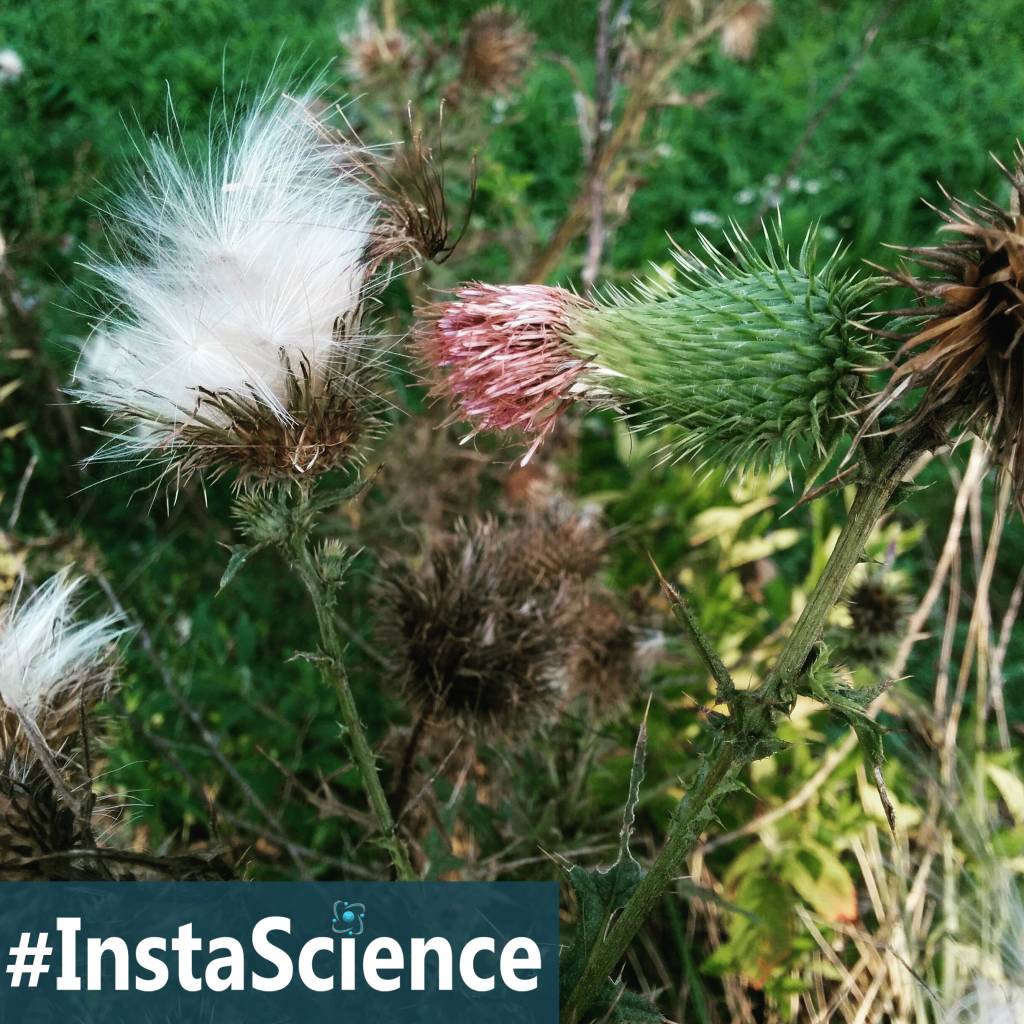
Bull Thistle is one of those “weeds” that almost all of us are familiar with! Its characteristic purple flowers are easy to spot as they adorn the top of the stem.
Plus, its spiky stem acts like a sentinel on the border of vacant fields and along trails. This weed definitely prefers wide, open, sunny areas!
But did you know that the flowering stems you see are actually the second year foliage for the Bull Thistle? The first year this weed actually develops a close-to-the-ground rosette of spiky, but hairy leaves. If all goes well, the next year, it will send up a 2 to 3 feet tall stem that flowers.
These flowers can be self-pollinated or insect-pollinated, usually by bees who love the Bull Thistle! The seeds that develop have long thin “hairs” that make it super easy to travel to its next location via the wind.
The seed can remain dormant for several years, and will germinate when conditions are just right.
Fun Fact – The Bull Thistle is native to Europe and Asia, but now can be found throughout North America!!
Teaching Science at Home
Want to learn more about the Bull Thistle? Check out the following articles:
- The Bull Thistle from King County’s Noxious Weeds
- Bull Thistle from Edible Wild Food
- {Video} Weed of the Week – Bull Thistle
Related Homeschool Science Activities
Keep the learning going with these science activities!
- Bull Thistle Nature Study – Head outside to find some Bull Thistle flowers. Once you spot the tall spiky stems, start looking around in the area for the first year rosettes.
- Seed board – Collect a few of the Bull Thistle seeds and use them to make a seed board. Don’t forget to add in a few of the maple seeds you collected from last week too!
 Sign up below to receive weekly tips & tools for homeschool science and we'll send you a FREE copy of
Sign up below to receive weekly tips & tools for homeschool science and we'll send you a FREE copy of